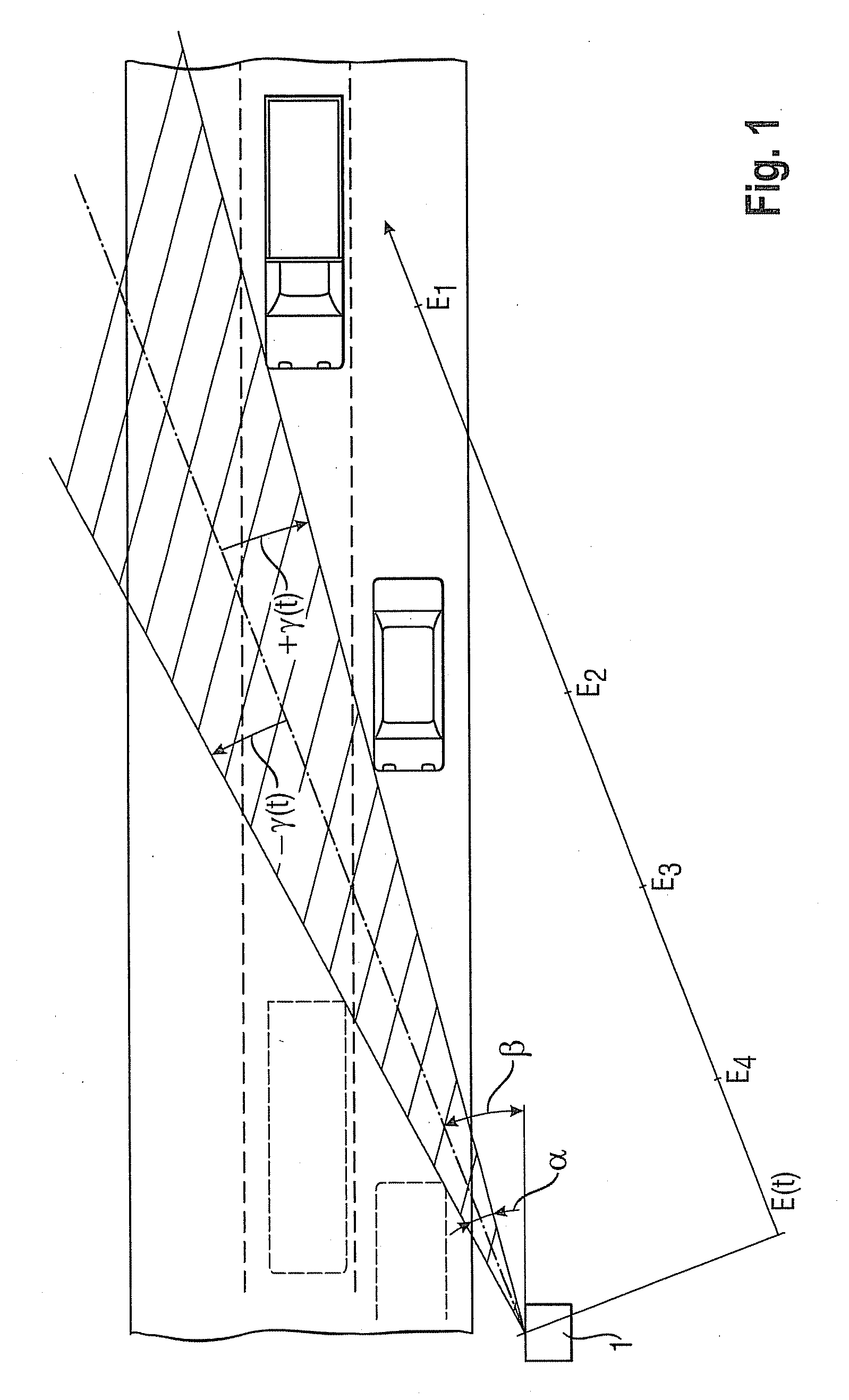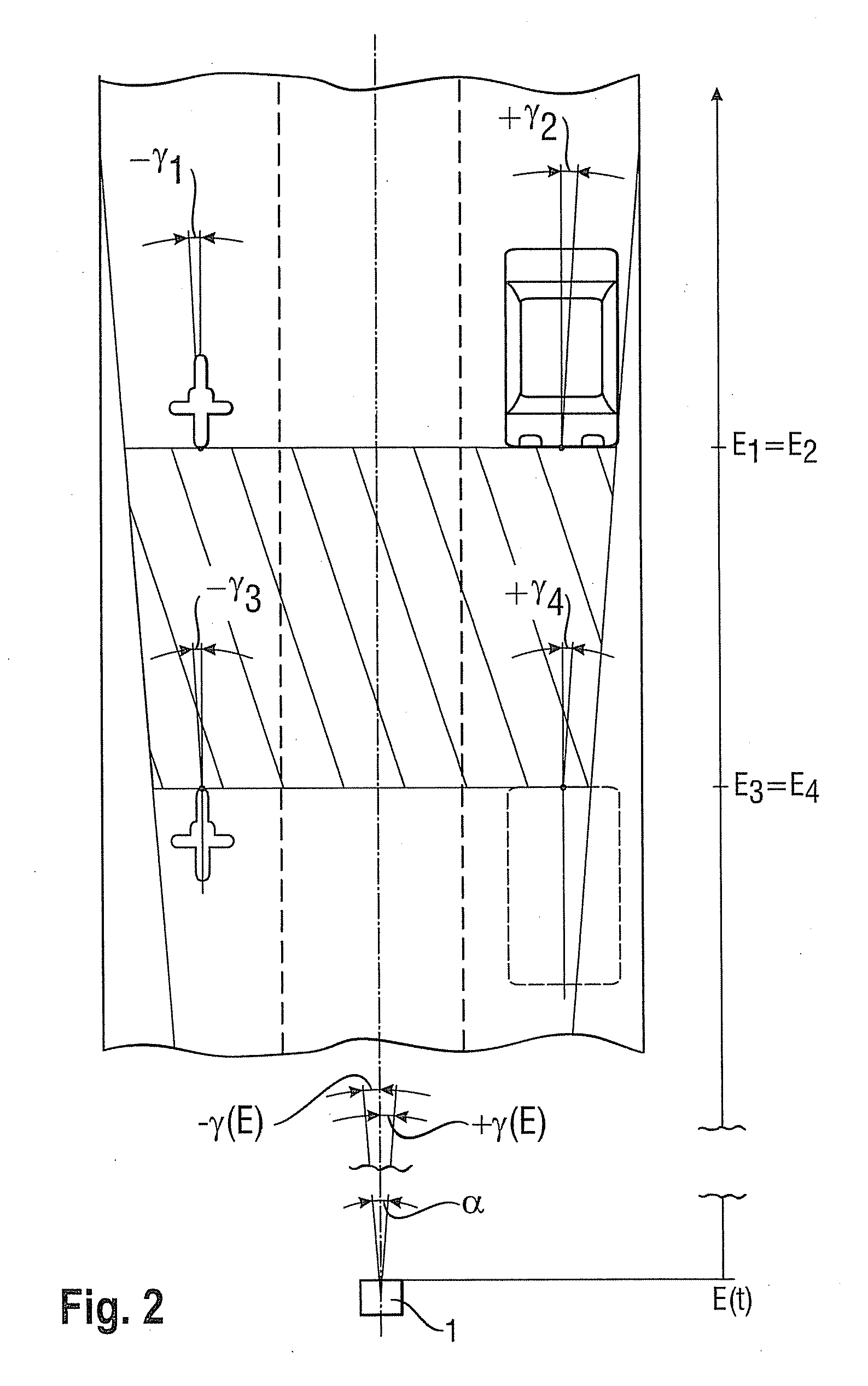Method of Verifiably Detecting the Speed of a Vehicle
a vehicle speed and verification technology, applied in the direction of measuring devices, using reradiation, instruments, etc., can solve the problems of high degree of technical complexity, inability to identify a vehicle in a group of vehicles solely on the basis of individual distances measured, and high degree of sequence control of the measuring process
- Summary
- Abstract
- Description
- Claims
- Application Information
AI Technical Summary
Benefits of technology
Problems solved by technology
Method used
Image
Examples
Embodiment Construction
[0023]To describe a first practical example based on FIG. 1, it will be assumed that a radar system 1 which emits a radar beam with an aperture angle a is positioned on the side of the road at an acute horizontal positioning angle B of the radar axis relative to the direction of the road on the side of a road [sic with multiple lanes. The positioning angle B can also be formed by an angle of squint of the radar antenna.
[0024]According to a second practical example, the radar system 1 could also be positioned above the road, e.g., on a bridge, as illustrated in FIG. 2, in which case, from a horizontal point of view, the radar axis coincides with the direction of the road.
[0025]These two fundamentally different configurations of the radar system 1 have hardly any effect on the measurement of the speed by means of the Doppler principle but differ considerably with respect to the possibility of identifying a vehicle based on its radial distance E from the radar system 1.
[0026]In the cas...
PUM
 Login to View More
Login to View More Abstract
Description
Claims
Application Information
 Login to View More
Login to View More - R&D
- Intellectual Property
- Life Sciences
- Materials
- Tech Scout
- Unparalleled Data Quality
- Higher Quality Content
- 60% Fewer Hallucinations
Browse by: Latest US Patents, China's latest patents, Technical Efficacy Thesaurus, Application Domain, Technology Topic, Popular Technical Reports.
© 2025 PatSnap. All rights reserved.Legal|Privacy policy|Modern Slavery Act Transparency Statement|Sitemap|About US| Contact US: help@patsnap.com



